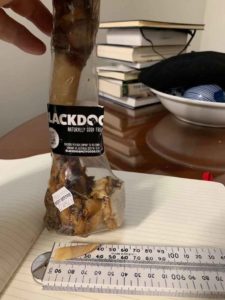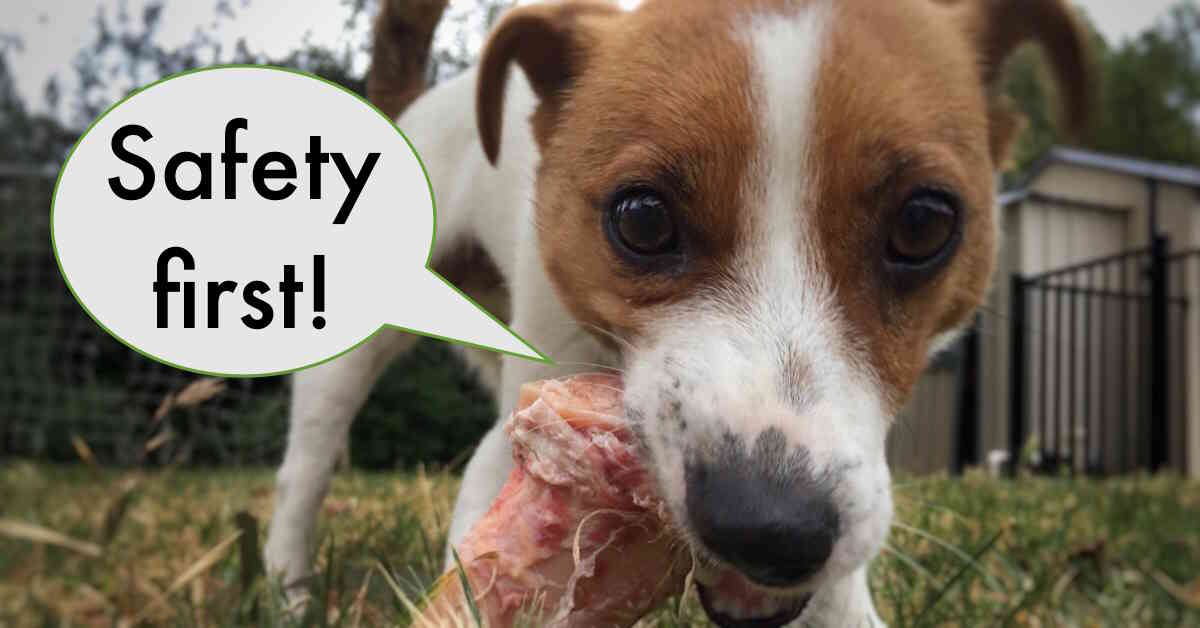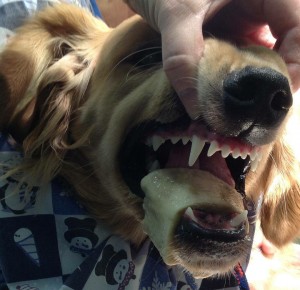Updated October 8, 2023
This might come as a shock to all the dog owners feeding raw bones. Vets are starting to advise owners not to do it.
To find out why this is happening, we need to dive into the debate over bone safety.
Why Fewer Vets Recommend Bones
Vets in the USA and UK have a long history of not advising bones for dogs. Personally, I think it goes right back to the bad old days of dogs being given leftover roast or chop bones. However, for this to be true it would mean vets in these countries are confusing raw and cooked bones, so that can’t be the whole story.
I think it’s a bit like Bondi Beach. When I lived in Sydney, like many Sydneysiders I swam there regularly, but it appeared in national news for poor water quality. When my friends arrived for a visit from Adelaide, they flat out refused to go in the water. All they knew was the news, not the experience of those who used it.
Vets who don’t advise raw bones (especially if they live in entire societies that don’t do it) are only likely to hear of the bad things that happen. As some US vets I know said recently, “you can always rely on a bone picture to share on Facebook.” Like this one, which by the way is definitely the wrong type of bone.
What adds a modern twist is the dominance of US-based information on the internet. Australian and New Zealand vets who recommend bones now have to explain to their clients why these pictures don’t tell the whole story.
The Rise Of Corporate Vets
Add to this the recent and dramatic ownership changes in vets worldwide. Mars Inc (yes, the guys that make Snickers) now own around 10% of North American vets, often the larger hospitals.
If you then read our guide to feeding bones to dogs, you’ll see the problem. Keeping every staff member of a large corporate structure ‘on-message’ is impossible, and the risks of feeding bones badly are real. I don’t think they have a choice but to protect themselves legally. If I ran a corporate veterinary chain I would do exactly what Greencross have done and make a blanket policy that raw bone feeding is discouraged.
Once enough people in a society don’t give bones to their dogs, the market disappears and those that want to do it can’t buy them. That’s what happened in the UK and why we wrote our guide to finding places that sell bones in Adelaide. In Australia, up to this point, we still have a strong tradition of local butchers and pet food stores mostly absent from the UK.
How Bones Are Dangerous

Bones can be dangerous to dogs by:
- Becoming lodged in the mouth
- Being stuck in the oesophagus
- Causing gastrointestinal upsets
- Causing tooth breakage
- Causing constipation
- Causing dogs to fight
- And possibly by causing choking if lodged in the throat
Beware: there are many more dangers if a bone has been treated in any way. I have only seen the problem of splintering and intestinal obstruction with cooked or processed bones. That’s why we never feed these.
Hazards & Possible Solutions
If all these things happen, how common or serious are they?
- Bones lodged in the mouth does happen at times and is very distressing until removed. It probably happens three or so times a year at our practice.
Reduce by: choosing bones large enough that your dog can’t crack or splinter them. - Oesophageal obstructions occur at Walkerville Vet roughly every five years and although treatable, it’s usually a distressing and expensive emergency.
Reduce by: good bone selection. Avoid pieces of bone that are small enough to be swallowed whole, and raw poultry of any size. - Gastrointestinal upsets cause vomiting or diarrhoea.
Reduce by: knowing that not all bones suit all dogs. Upsets can be due to a beef, lamb or pork intolerance, a marrow intolerance, pancreatitis or bacterial contamination, especially with raw poultry. Read more here about making raw diets safer. - Tooth breakage is also common and is in my view the greatest price to pay for feeding dogs bones. We probably remove a fractured tooth once a month at our clinic but of course, we don’t know exactly how each one happened.
Reduce by: never feeding cooked, smoked or cured bone, or other hard materials like antlers. When we also see it with raw bone, these are usually over-enthusiastic dogs like Labradors trying to eat up instead of gnaw a bone. If you hear cracking noises, stop! - Constipation occurs in some dogs.
Reduce by: reducing the amount of bone offered per day. I know one dog that gets psyllium husk on bone days. Constipation is much more likely with cooked bones. - Choking could happen but is extremely rare.
Reduce by: avoiding chicken bones completely, breakable bones or anything small enough to fit in your dog’s mouth. Read two other good reasons not to feed raw chicken to dogs here. - Fighting is very common when two or more dogs have bones.
- Reduce by: keeping dogs with bones separate if there’s any risk. My dogs, like most are OK but I’m always wary.
- Resource Guarding is the same possessive aggression that some dogs experience when with a bone, this time towards people. It can be a problem especially if children try to approach these dogs.
Reduce by: only feeding bones to these dogs when they can be isolated, and picking up their bones before visitors arrive. Seeing a behaviourist is ideal, and never try to confront the dog directly.
Of course, all these risks can never be completely prevented and are increased if you choose to give dogs bones unsupervised (as I do). It’s all about knowing the risks and knowing your dog.
How Often Do Dogs Choke On Bones?
I have supported owners who choose to offer bones for over 25 years. In that time, I have sadly seen one dog die from choking on bones. The dog in question was a puppy being fed raw chicken wings.
I have seen other dogs appear to come close to choking on raw chicken and do not recommend it for this reason. I suspect that these dogs choke when they attempt to swallow raw chicken without chewing it properly. I suspect this could also happen with turkey bones.
Choking on mammalian bone is rare enough that I haven’t seen it, but it could still happen if dog manages to swallow a small-enough fragment. That’s why before starting, please read more about bone selection and bone safety here.
Are There Alternatives To Bones?
There’s no way we expect every dog owner to be happy to feed bones. Other ways to keep teeth clean include:
- Dentastix® or Greenies® daily
- Dental foods, especially Hills t/d®
- Toothbrushing daily
- Dental ultrasonic scaling under anaesthetic
Of these, toothbrushing is the most effective prevention, but only bones or ultrasonic scaling can remove tartar. However, never use bones to remove tartar without first getting a vet to check for painful teeth.
There are many other options tried by our clients, but I don’t see much else working. It’s also important to point out that some dogs not given bones end up chewing on other more dangerous items instead.
Rawhide chews, for example, are not an alternative. They appear to do nothing for teeth and represent a real choking hazard. If you’re still not convinced, just look into how they’re made.
Other ways to keep dogs amused are listed on our page of safer dog chew toys.
The best way to supply calcium and minerals is to use a quality complete, balanced diet.
Are Raw Bones Good For Dogs?
Owners give raw bones to dogs for three key reasons:
- Cleaner teeth, healthier gums and a reduced need for dentistry (bones have been shown to remove tartar in two studies)
- Behavioural benefits from ‘slow food’ that occupies time and relieves boredom
- Nutritional support, especially to dogs on homemade or raw diets
Click here to read unpublished bone feeding research based on data that came from our own patients. That’s right- some of your dogs!
Have something to add? Comments (if open) will appear within 24 hours.
By Andrew Spanner BVSc(Hons) MVetStud, a vet in Adelaide, Australia. Meet his team here.



My vet no longer recommends raw chicken wings because of the salmonella risk. I thought that was pretty low in Aussie chickens?
Cuts of raw chicken for human consumption were found to be contaminated by Salmonella around 40% of the time here in South Australia. That’s probably a reasonable benchmark, and way too high to ever feed raw to dogs.
Hi Andrew.
Just bought a goat horn for my golden retriever. She’s having a fun time licking and chewing it but now I’m worried about her teeth cracking. What do you advise I do?
Thanks,
Casey
Hi Casey. I haven’t seen goat horns cause any problems so you should be OK. I’m not sure of their benefits either but if it’s being enjoyed, that’s a start!
Absolutely agree. Also 40 years in Practice seeing a positive difference in not only Oral Health but long term general health in dogs given raw bone. As Andrew has said important to know your dog and choose the right bone. Once weekly is good without wearing teeth and second best reason is the sheer enjoyment it gives .
Great article Andrew. In my experience of being a vet and a dog owner for over 40 years I have always fed my dogs raw bones and recommended raw bones for my clients. Having owned Labradors who are enthusiastic chewers, I noticed with my previous ones that there was a lot of wearing down of the teeth with large marrow bones although no dental problems. My current Labrador who is 14 years old has only every received beef pelvic bones, nice and flat, unable to break off any chunks, needs to gnaw and less wear on the teeth. Perfect teeth and gums and never needed a dental. I think the adverse effects of not feeding boes far outweigh the adverse effects of feeding them. Since advocating feeding whole beef pelvic bones have not seen any adverse effects in terms of breaking off and swallowing chunks, of bones or breaking teeth. The bones are roundish making it hard to break off chunks which means they gnaw at the bone, there is little marrow so not fattening especially for Labradors. It is important to ask the butcher not to cut the pelvic bone in half as they want to do, otherwise a large dog may be able to break off a chunk.
Awesome article Andrew, what are your thoughts on raw chicken necks for a maltese shihtzu?
Thanks! Generally due to the rare incidence of choking we don’t advise raw chicken necks, though many people do use them safely. If a client has fed them for years without problems there’s probably very little risk and they can be very effective for dental cleaning in small breeds.